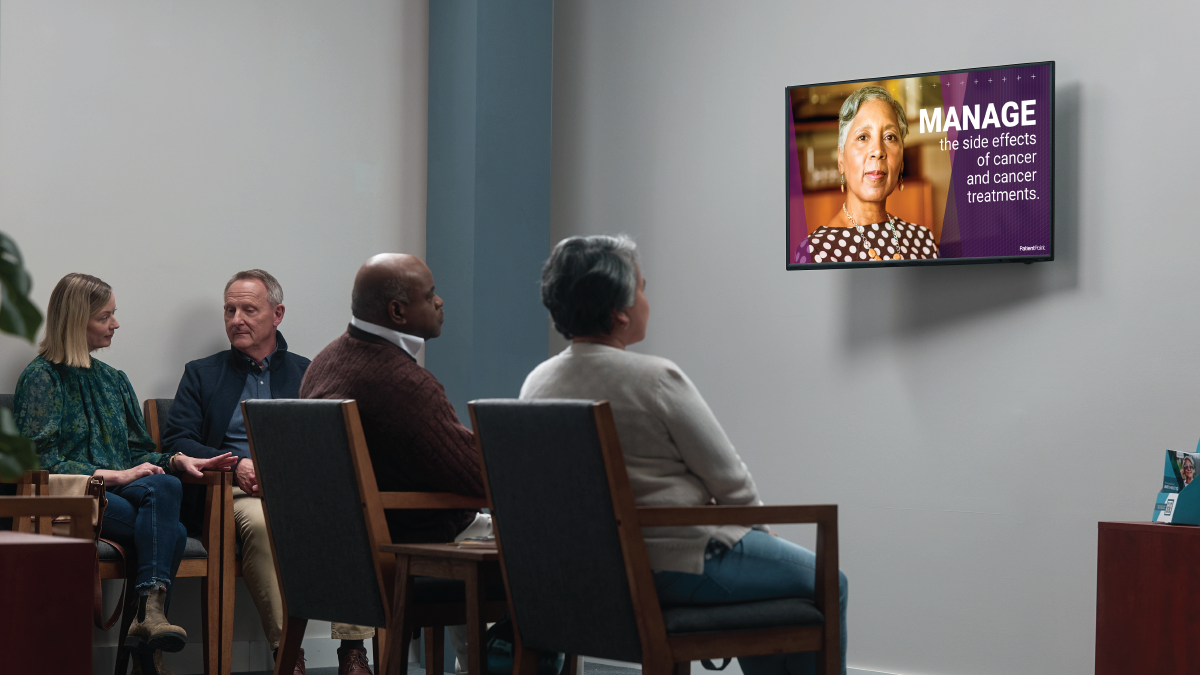Over the years, healthcare practices have adopted the conveniences of the consumer experience—including online forms and appointment scheduling. Innovations in technology have made these modern conveniences possible, yet nearly half of Americans feel they don’t have enough information to prepare them for the visit. With patient engagement technology, practices can give patients the right information at the right moments to reduce anxiety, prepare patients for the visit and build trust. But what exactly is patient engagement technology and how can you implement it into your practice?
What is patient engagement technology
Before we define patient engagement technology, let’s break it down into its component words. Patient engagement involves the moments in which patients actively engage in healthcare decisions. This could be at home, in the waiting room, exam room or in the grocery store aisle. In the simplest terms, technology refers to tools, techniques, and systems designed and used to solve problems or perform tasks. Technology makes life more efficient, convenient, and productive. Patient engagement technology is the tools and systems that help patients become active partners with their care team in healthcare decisions.
For healthcare practices to fully engage patients, they must understand engagement technology so the right tools can be used at the right time. Let’s explore how to build your engagement tech stack.
Before and after the appointment
Before patients find your practice, they search for symptoms and health information online. Consider your social media channels and website as part of your patient engagement tech stack. Across these channels, you’re talking to your patients and others in your community who may not be patients. Messages here should help you build awareness of your practice’s brand and care goals.
Often, a patient’s first impression of your practice is your online listing—mainly your Google Business Profile (GBP). Digital marketing platforms designed for the healthcare industry should include features that allow you to update your practice and provider information accurately across most search engines. You’ll also want to look for a platform that helps you send HIPAA-compliant ads to your patient population.
Even if you’re not using a marketing platform, consider making your GBP part of your engagement tech stack. Patients will go here to find out what services you offer, what other patients think about your practice and your contact information.
Automated appointment reminders are standard for most practices now. To further engage patients, consider a platform that allows you to send condition-specific content or practice information to help prepare the patient for their visit. By sending education and information before the visit, you’re helping reduce anxiety because they know what to expect from the visit, and it creates more effective conversations in the exam room.
In the waiting room
Your engagement tech stack for the waiting room should help you give patients the necessary information and reduce administrative workload. Kiosks and digital intake tablets are great ways to offset staff workload and even include opportunities to engage patients with health information.
Another option to consider is waiting room TVs. The best digital signage extends beyond filling the time with cable or streaming services. Programming should focus on actively engaging patients, educating them and influencing their behavior.
Look for a customizable platform that allows you to tailor information that supports your care goals—including health information, education and messages about your practice’s services, policies and news—all important moments that help engage patients with their care journey and your practice.
In the exam room
Incorporating engagement technology during the exam serves two purposes. One: it gives doctors the right tools to educate patients during the visit in a memorable way. Two: it gives patients something to do while they wait for the doctor.
Patients spend an average of 11.6 minutes in the exam room without their healthcare provider.1 Including an exam room screen for patients to interact with reduces patient anxiety and enhances efficiency, especially when it prepares patients with information relevant to the appointment. Medical assistants can pull up procedure videos for the patient to prepare for their visit, leading to better doctor-patient conversations. While they wait for the provider, patients can read articles or watch videos about their health condition and send resources to their phones that they would like to revisit once they are home.
Engagement tools should also give doctors resources that help them have effective conversations with patients. 3D anatomicals explain conditions, drive greater medication adherence and improve outcomes according to numerous studies2. Look for exam room devices that allow you to add links to the resources and education your providers often use, like your patient portal, practice website or assistance programs.
Build a patient engagement tech stack that works
Patient engagement happens at every moment in the care journey. Implementing tools for each moment will help you get information to the patient that sticks, reduce their anxiety and engage them with their care.
Learn more about engagement solutions that might be a good fit for your practice.

